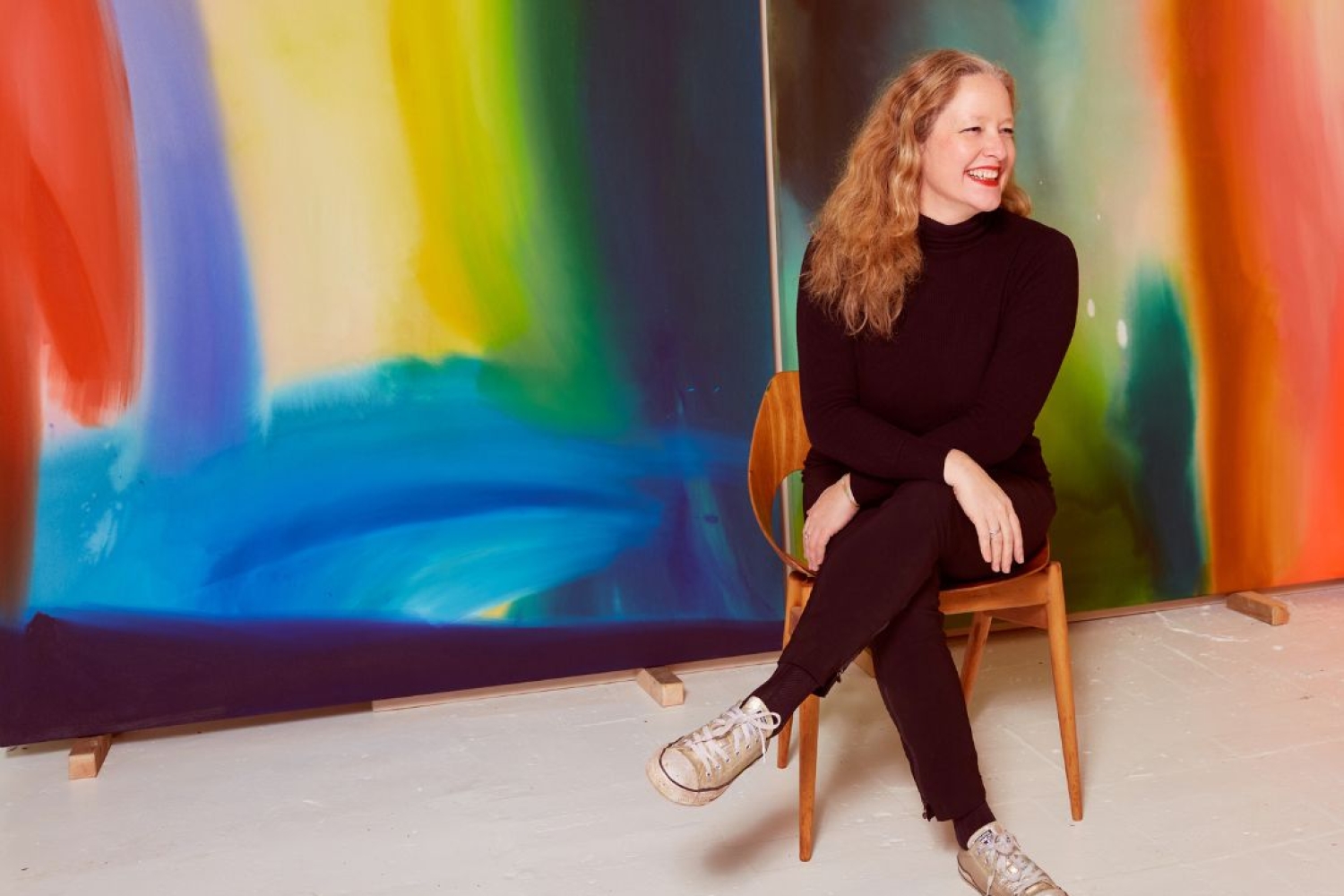

Ptolemy Mann is a renowned British artist known for her innovative approach to weaving and colour, creating works that blend traditional craft with contemporary design. Her practice focuses on the tactile process of weaving and dyeing, which serves as the foundation for her abstract, gestural thread paintings. These artworks explore the dynamic interaction between colour, texture, and form, drawing on a philosophy of chromatic minimalism that emphasizes emotional resonance and personal connection.
In this interview, Mann delves into her creative process, discussing the exclusive Threshold artwork for the RIMOWA Essential Cabin Nautical.
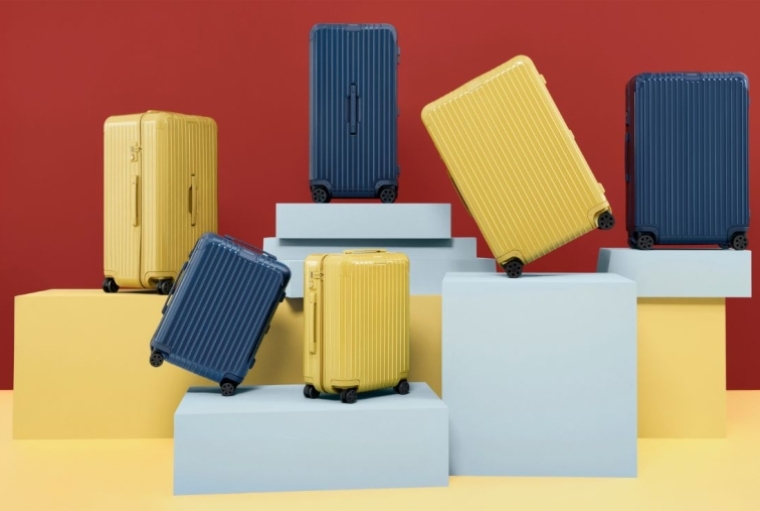
Can you tell us about the design process behind the exclusive Threshold artwork?
We wanted the collaboration to have a strong story and concept behind it. We decided early on that this idea of a symbolic and visual Threshold that represented traveling not only as a physical journey – but also an emotional and mental journey – would be quite special. I have been work- ing on a series of ongoing paintings exploring abstract thresholds for a few years so it made sense to develop a new painting as a continuation of this idea for the case. This project was completely different to anything else I’ve ever worked on. RIMOWA has such a strong identity and history that it was challenging to honour that and try and bring my own signature to the case. I do love the idea of a portable artwork you carry with you through life. It ties in perfectly with RIMOWA’s philosophy that these cases stay with you forever; and of course art should also be some- thing you treasure and pass on.
As someone who works on large-scale pieces, what was it like adapting your style to a much smaller, functional surface?
There were quite a lot of technical restrictions in terms of how we realised the idea, but it was also interesting to explore lots of crazy, fun visuals early on. This was such anenjoyable process with the team at RIMOWA. It was lovely to see the brushstroke applied to the case in a such an ele- gant way – it really feels like I’ve painted in there and then on the spot. I love the immediacy of the gesture. The surface was so important to get right...the difference between gloss and matte and the texture of the paint. It’s actually really hard to get that right through print technology and I feel so happy with the result. As a weaver I’m used to restrictions, as the weaving process is as much about what you can’t do as what you can. I actually enjoy those limitations as it often makes for a much more interesting result. It’s quite a delicate balance to get the functional requirements of a product in sync with an aesthetic desire you might have as an artist.
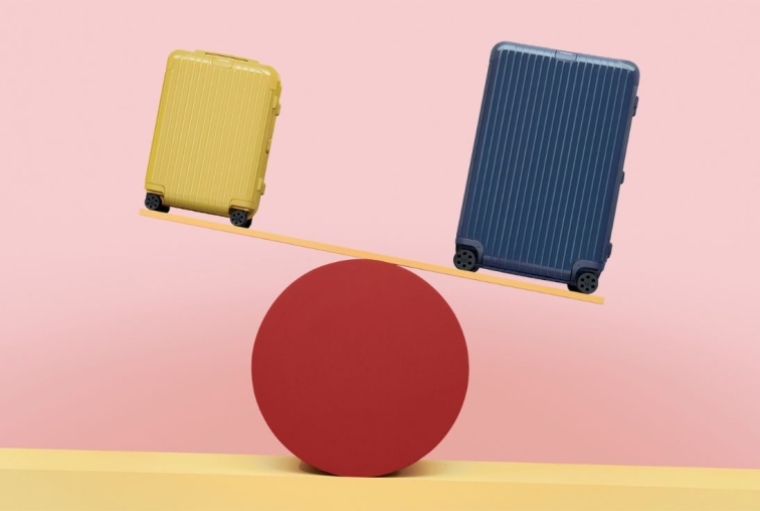
How does the tactile process of thread and dye inform the way you approach colour and form in your work?
I began making woven artworks almost thirty years ago so the tactile process of dyeing and weaving thread is fundamental to all my work. It underpins everything I do. Weaving and constructing cloth is a fantastic metaphor for the creative process. The thread paintings are even more complex as they combine two very different ways of working. The weaving is process lead, slow and planned and rather cerebral whereas the painted gesture over the top (or on paper or canvas) is intuitive, fast, emotional and spontaneous so when they come together it’s intriguing and unpredictable. I would say everything I do is informed first and foremost by colour. The mode of delivery can vary but the energy comes from the dynamics and interaction of colour.
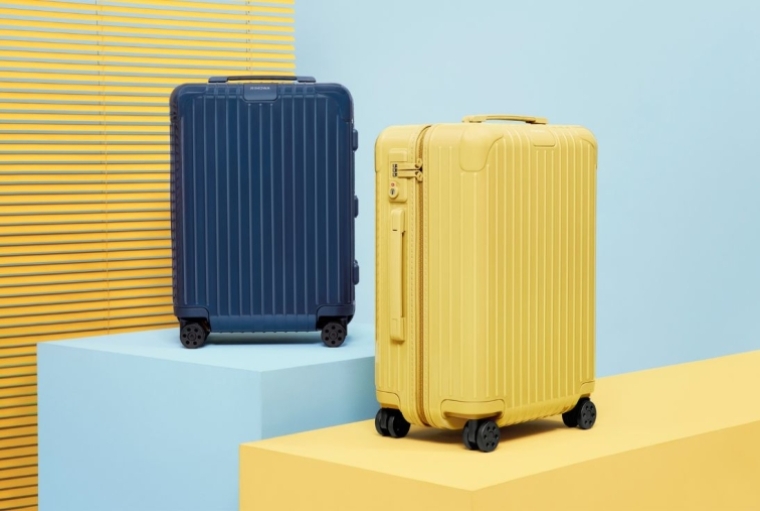
In what ways do the two new colour ways—Nautical and Ginger—reflect your artistic philosophy, particularly your approach to chromatic minimalism?
It was a complete coincidence that these two new colours were inspired by the city of Copenhagen, which is a place where I spend a lot of time and have been visiting for over 30 years. These new colours had been chosen before I was asked to collaborated with RIMOWA. Copenhagen is a place I feel deeply connected to and the ginger / yellow ochre colour is a fundamental part of the architectural landscape of the city. The older buildings are often painted entirely this colour—a sort of chromatic minimalism in itself—and it’s very distinctive and provocative. It’s a colour that comes from the earth and reflects light. Because of my long standing family connections to the city it’s a colour that resonates emotionally for me and colour is indeed, a very personal thing. Nautical is one of my favourite colours in recent years as it reflects the deep blue of the harbour in Copenhagen—a dark inky blue that feels endless. Copenhagen is a city that is surrounded by, and connected to, water. I swim there every summer all over the city, as do many others and there are so many bridges and islands—it’s a real theme of the city.
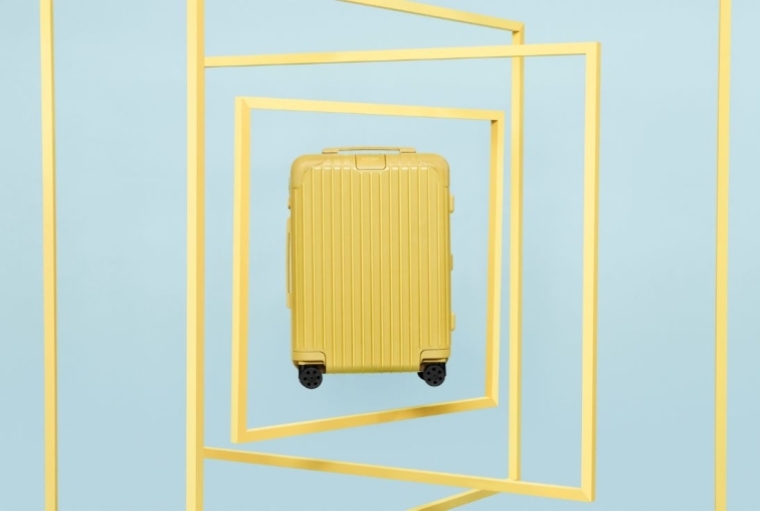
What role do you think travel and luggage play in modern life, and how does your artwork on RIMOWA’s suitcases add to that narrative?
By transforming the RIMOWA shell into a canvas, I wanted to bring a sense of movement and emotional resonance to the suitcase—a testament to the profound purpose inherent in every voyage. The pandemic taught us that traveling can be a physical sensation that we can miss but also a spiritual and mental experience. As voyagers, we traverse myriad thresholds, not just of physical spaces but of the mind and spirit. I absolutely love the idea of an object, a suitcase, that can be an artwork in its own right and an artwork we can carry with us. It’s such a simple idea but I think also a profound one. Art tends to be quite static, something we keep at home and associate with home but this plays with the idea of a different kind of artwork. It’s also the RIMOWA philosophy that it lasts a lifetime—and beyond—something one can pass down to the next generation. It’s also an object that can carry memories and emotions that traveling can inspire. I think luggage is usually something we think of as being entirely anonymous but also the fact that a lot of people travel with a cabin bag that stays with them throughout the journey is interesting... its becomes even more personal and identifiable. It’s also a bag that we can carry for a weekend or overnight so its not just about those big trips far away but the smaller ones we experience closer to home. By adding a painting to the surface of this object we are giving it a sense that it’s just been painted, by my own hand...the paint almost still looks wet which I think has unexpected resonance.
Words Paridhi Badgotri
Date 23.01.2025